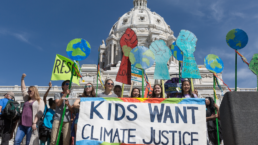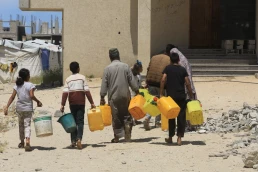When fighting Big Oil, whether the U.S. judicial system is fit to handle the intricacies of climate science and complexities of climate organizing remains to be seen.
by Ray Levy Uyeda, Prism
Earlier this month, the state of California announced it is suing five of the world’s largest oil and gas companies, alleging that they engaged in a “decades-long campaign of deception” to convince consumers that their product was harmless. The truth couldn’t be further from the companies’ claim, and the state hopes a courtroom will see that too. While notable for its scale and potential to set a history-making precedent, this is not the first case of its kind.
Since 2015, the cumulative number of climate change-related cases filed at local, state, and national levels worldwide has doubled to more than 2,000. Most of the defendants in these cases are either governments or fossil fuel profiteers, which plaintiffs generally claim have tacitly supported the interests of Big Oil or captured and exploited a customer base into dependency on a product that will slowly kill them.

The courtroom is not generally a place where climate wins or justice happens. The birth of the environmental justice movement in the 1980s in Warren County, North Carolina, and later across the American South paved the way outside the courts. The Black communities that fought racist placement of amenities, like landfills and toxic-waste dumps near school and poor neighborhoods, illustrated how people have always created the conditions for possibility and change, and how they have ultimately shaped justice.
Recent Posts
“Arrest Now, Ask Questions Later”: Why Did L.A. ICE Agents Arrest and Jail U.S. Citizen Andrea Velez?
July 3, 2025
Take Action Now “They didn’t have vests that said ICE or anything. Their cars didn’t have license plates. … Just because of the color of our…
Trump’s Big, Beautiful Bill Is Naked Class War
July 3, 2025
Take Action Now Trump’s “Big, Beautiful Bill” trades tax cuts on millionaires for the dissolution of society.By Hamilton Nolan, In These Times…
Mayor Mamdani’s First Day, A Zero Hour Conversation With Richard Wolff
July 2, 2025
Take Action Now If elected, what would Mayor Mamdani do on his first day in City Hall? How would a democratic socialist govern as a big-city mayor?……
The U.S. Is Funding A Bloodbath At Gaza Aid Centers
July 2, 2025
Take Action Now The admin just gave $30M to GHF, the organization at the center of charges that Israel is weaponizing assistance and shooting at…




